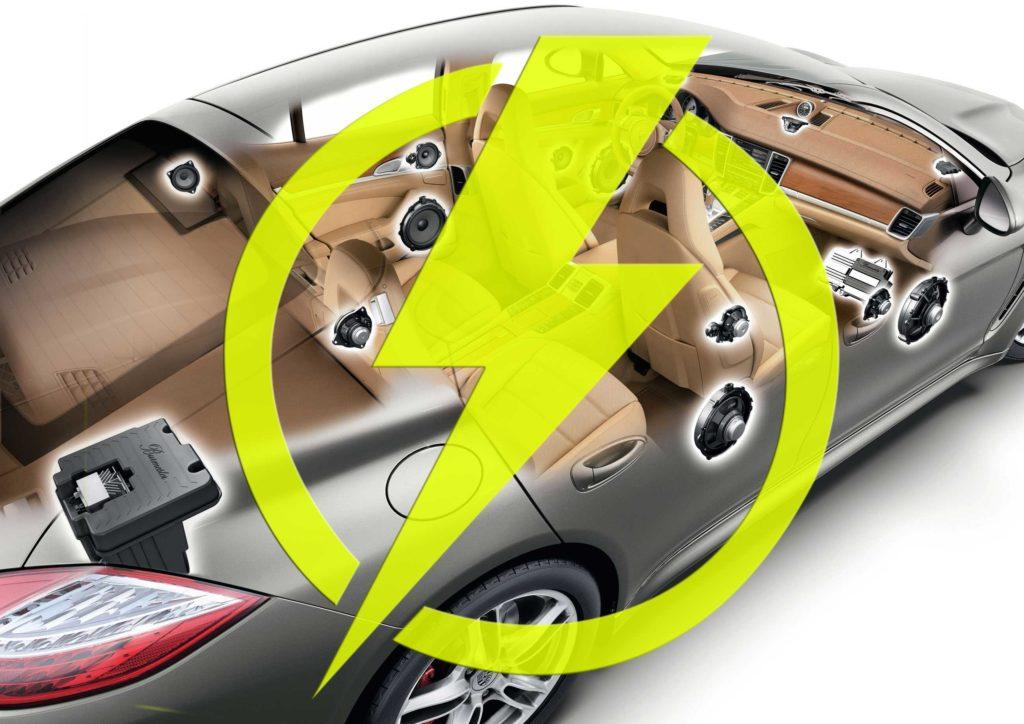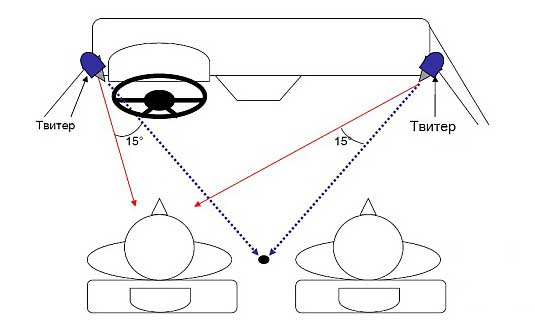
Proper connection and installation of the tweeter
Content
⭐ ⭐ ⭐ ⭐ ⭐ In the process of installing a new speaker system, the owner may have the following task - how to connect tweeters (tweeters) so that they work efficiently and without problems?
The essence of the issue is the complexity of the device of modern stereo systems. For this reason, in practice, there are often cases when the installed tweeters either work with distortion or do not work at all. By adhering to the installation rules, you can avoid possible difficulties - the procedure will be as quick and simple as possible.
What is a tweeter?
Modern tweeters are a type of sound source whose task is to reproduce the high-frequency component. Therefore, they are called so - high-frequency speakers or tweeters. It should be noted that, having a compact size and a specific purpose, tweeters are easier to install than large speakers. They produce a directional sound, and are easier to place to create high-quality detail and accurate portrayal of the sound range, which the listener will immediately feel.
Where is it recommended to install tweeters?
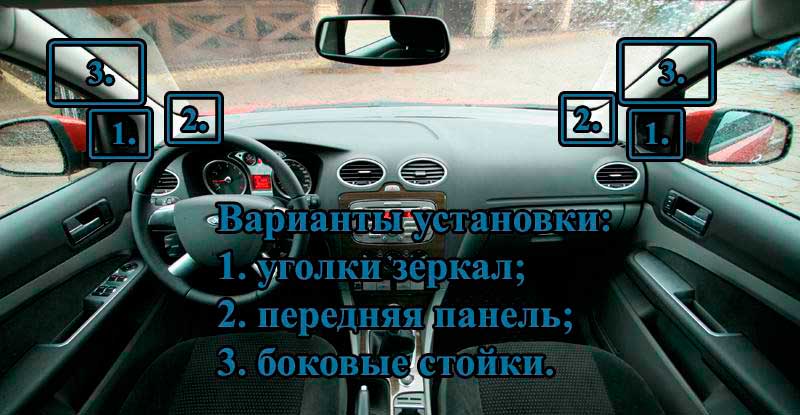
Manufacturers recommend many places where tweeters can be placed, most often at ear level. In other words, aim them as high as possible at the listener. But not everyone agrees with this opinion. This setting is not always convenient. It depends on the specific circumstances. And the number of installation options is quite large.
For example:
- Mirror corners. During the trip, they will not cause additional discomfort. Moreover, they will beautifully fit into the interior of the vehicle;
- Dashboard. Installation can be done even with double-sided tape;
- Podiums. There are two options here. The first is to put the tweeters in a regular podium (which comes with a tweeter), the second is to make the podium yourself. The latter case is more complicated, but it guarantees a better result.
Where is the best place to send tweeters?
When designing a car audio, you can choose one of two options:
- each tweeter is directed towards the listener. That is, the right squeaker is sent to the driver, the left - also to him;
- diagonal setting. In other words, the tweeter on the right is routed to the left seat, while the left speaker is routed to the right.
The choice of one or another option depends on the individual preferences of the owner. To begin with, you can direct the tweeters towards yourself, and then try the diagonal method. After testing, the owner himself will decide whether to choose the first method, or give preference to the second.
Connection Features
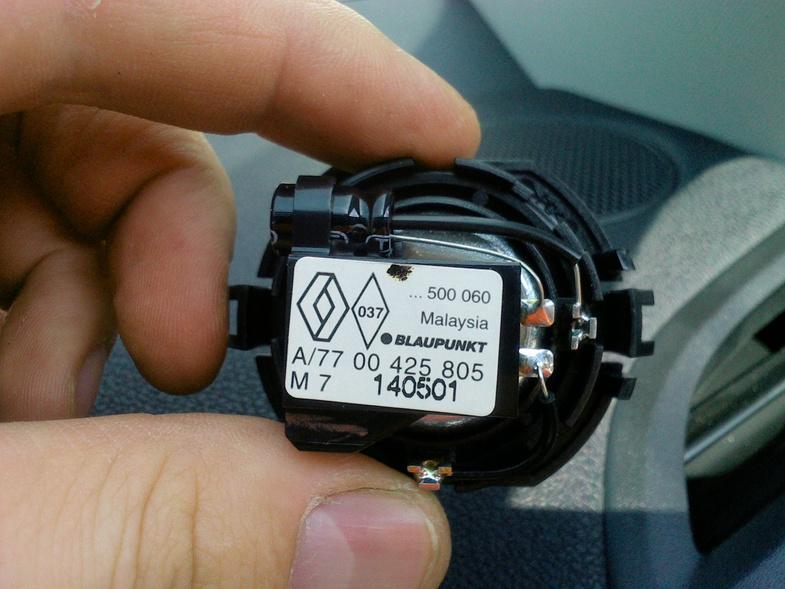
A tweeter is an element of a stereo system whose task is to reproduce sound with a frequency of 3000 to 20 hertz. The radio tape recorder produces a full range of frequencies, ranging from five hertz to 000 hertz.
The tweeter can only reproduce high-quality car audio, the frequency of which is at least two thousand hertz. If a lower-frequency signal is applied to it, it will not play, and with a sufficiently large power for which mid- and low-frequency speakers are designed, the tweeter may fail. At the same time, there can be no question of any quality of playback. For durable and reliable operation of the tweeter, you should get rid of the low-frequency components that are present in the overall spectrum. That is, make sure that only the recommended operating frequency range falls on it.
The first and easiest way to cut off the low-frequency component is to install a capacitor in series. It passes the high frequency band well, starting from two thousand hertz and more. And does not pass frequencies below 2000 Hz. In fact, this is the simplest filter, the possibilities of which are limited.
As a rule, the capacitor is already present in the speaker system, so it does not need to be purchased additionally. You should think about buying it if the owner decided to get a used radio, and did not find a capacitor in the tweeter kit. It may look like this:
- A special box to which a signal is applied and then transmitted directly to the tweeters.
- The capacitor is mounted on a wire.
- The capacitor is built directly into the tweeter itself.

If you did not see any of the listed options, you should buy the capacitor separately and install it yourself. In radio stores, their assortment is large and diverse.
The filtered frequency range depends on the type of capacitor installed. For example, the owner can install a capacitor that will limit the frequency range supplied to the speakers to three or four thousand hertz.
Note! The higher the frequency of the signal applied to the tweeter, the greater the detail of the sound can be achieved.
In the presence of a two-way system, you can make a choice in favor of a cutoff from two to four and a half thousand hertz.
connection
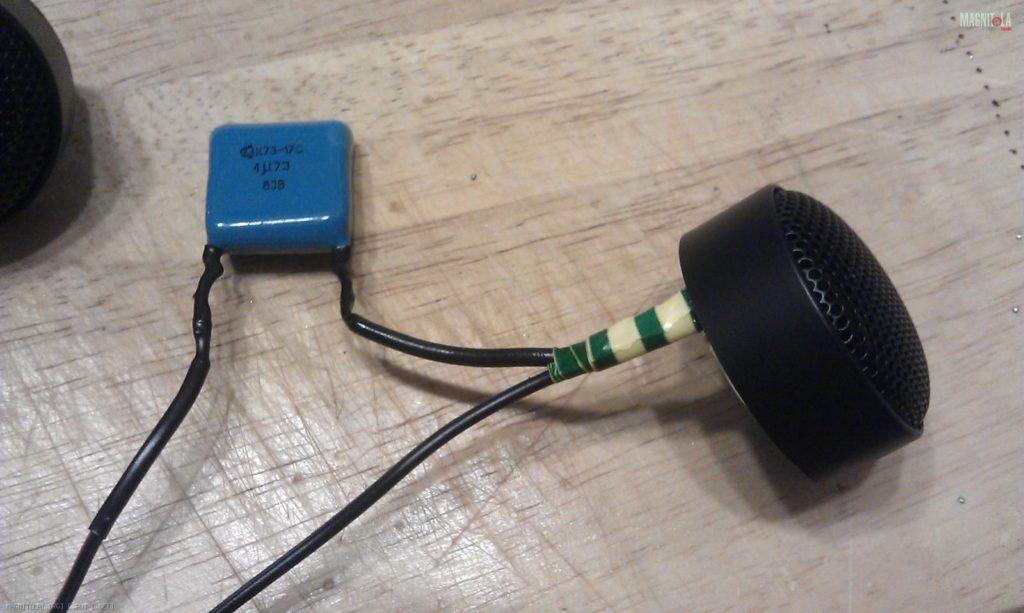
The tweeter connection is as follows, it is connected directly to the speaker that is located in your door, plus the tweeter is connected to the plus of the speaker and the minus to the minus, while the capacitor must be connected to the plus. For more details on which color of the wire is suitable for which column, see the radio connection diagram. This is practical advice for those who don't know how to connect tweeters without a crossover.
An alternative connection option is to use a crossover. In some models of speaker systems for cars, it is already included in the kit. If not available, you can purchase it separately.
Other Features
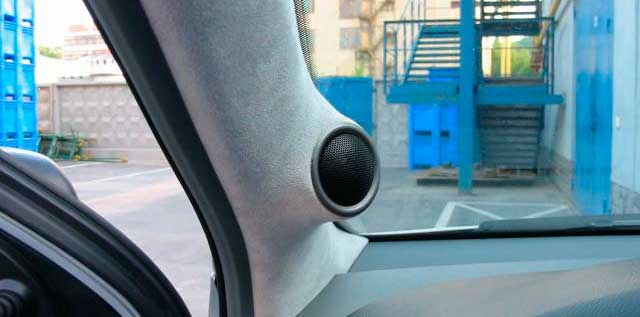

To date, the most common version of the tweeter is an electrodynamic system. Structurally, it consists of a housing, a magnet, a coil with a winding, a diaphragm with a membrane and power wires with terminals. When a signal is applied, a current flows in the coil, an electromagnetic field is formed. It interacts with the magnet, mechanical vibrations occur, which are transmitted to the diaphragm. The latter creates acoustic waves, sound is heard. To improve sound reproduction efficiency, the membrane has a specific dome shape. Car tweeters usually use silk membranes. To obtain additional rigidity, the membrane is impregnated with a special compound. Silk is characterized by the ability to more effectively cope with high loads, temperature changes and dampness. In the most expensive tweeters, the membrane is made of thin aluminum or titanium. You can meet this only on very prestigious acoustic systems. In a conventional car audio system, they come across quite rarely.
The cheapest option is a paper membrane.
In addition to the fact that the sound is worse than in the previous two cases, such equipment has an extremely short service life. And this is not surprising, since paper cannot provide high-quality operation of the tweeter in conditions of low temperature, high levels of humidity and high load. When the machine increases the engine speed, an extraneous sound may be felt.
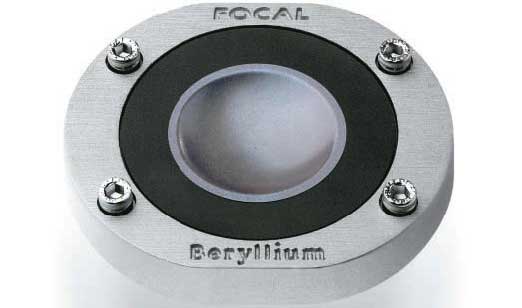
Do not forget that you can also set up the buzzer using the radio. Even the cheapest models have the ability to adjust the high frequencies. In particular, models of the middle price range have a built-in equalizer, which greatly simplifies the task.
After installing the tweeter, you need to set up the audio system, and how to do this, read the article "How to set up the radio".
Video how to install tweeters
Conclusion
We have put a lot of effort into creating this article, trying to write it in a simple and understandable language. But it is up to you to decide if we did it or not. If you still have questions, create a topic on the "Forum", we and our friendly community will discuss all the details and find the best answer to it.
And finally, do you want to help the project? Subscribe to our Facebook community.
